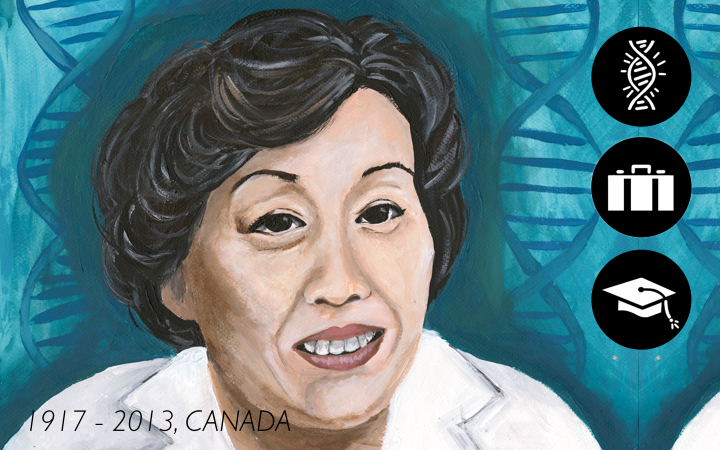Irene Ayako Uchida, OC (April 8, 1917 – July 30, 2013) was a Canadian scientist and Down syndrome researcher.
Born in Vancouver, she initially studied English literature at the University of British Columbia. As a child and teenager she played violin and piano, and was described as “out-going” and “social”. She went to visit her mother and sister who were in Japan at the time, and was able to catch a ship out of Japan prior to the Japanese attack on Pearl Harbor on December 1941.
In 1944 she continued her studies at the University of Toronto where she wanted to get a master’s degree in social work. Her professors encouraged her to pursue a career in genetics, and as a result she completed PhD in human genetics at the University of Toronto in 1951 and worked at the Hospital for Sick Children in Toronto. At the Hospital for Sick Children she studied twins and children with Down syndrome. In the 1960s she helped identify the link between x-rays and birth defects in pregnant women.
In 1960 she became the director of the Department of Medical Genetics at the Children’s Hospital in Winnipeg and became a professor at the University of Manitoba (National Library of Canada and National Archives of Canada, 1997).
In 1993, she was made an Officer of the Order of Canada for “her research on radiation and human chromosome abnormalities [that] has made a notable contribution to medical science”.[1]
(From Wikipedia, March 2018)


